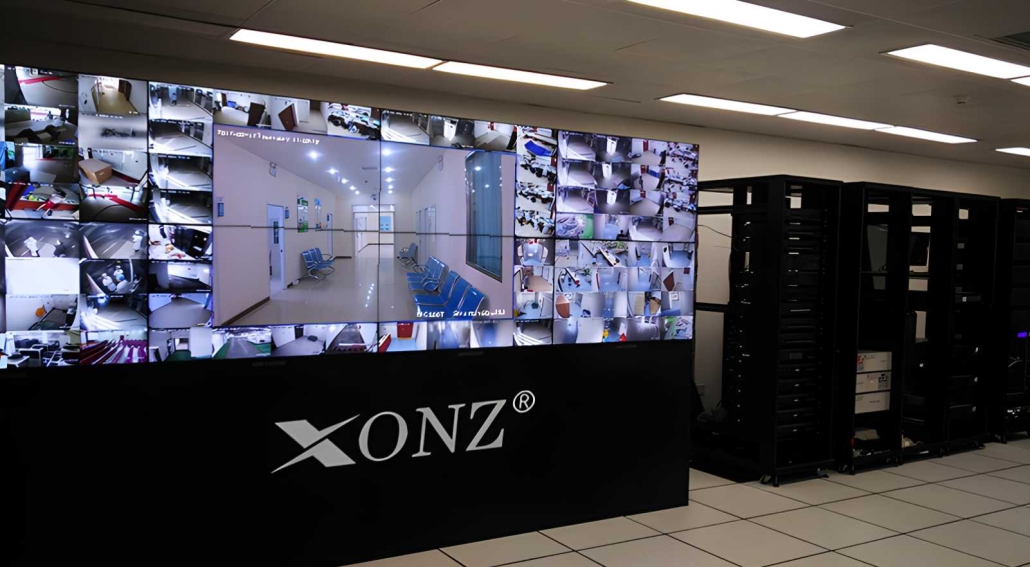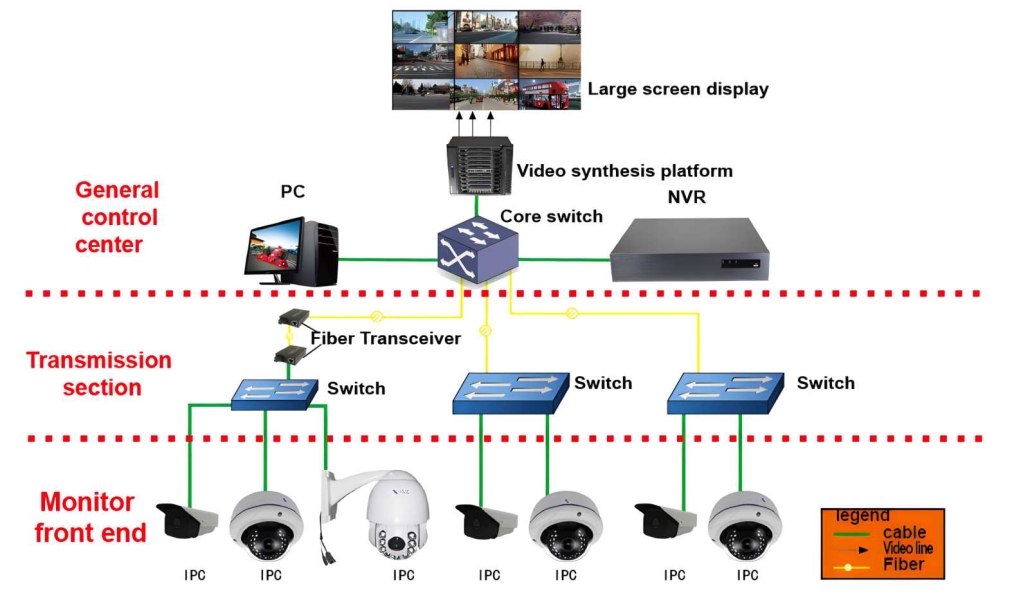Five minutes to understand the monitoring system (about camera)
Safety is an extremely important part of our lives, however, how to choose a high-quality security monitoring products, for many consumers in need, it is a big problem, because the security manufacturers provide so many specifications, it seems mysterious, do not understand the actual quality of the product, in order to help consumers to understand the different performance of various equipment, we prepared the following article.
When purchasing security monitoring products, you must understand the current monitoring system category firstly. Current security monitoring system, can be divided into traditional analog, analog HD (analog high definition) and IP ranges. Analog system is the industry’s first development of the system, but also in the past market the most widely used goods. In order to solve the shortcomings of the analog system pixel defects, comes AHD, CVI, TVI etc Analog High Definition System. The IP system is one of the high definition system which has been promoted before above three mentioned analog HD system. IP system is relying on network streaming, it has a considerable advantage in different systems integration, which is the biggest difference compare to the analog system and AHD, CVI, TVI system.
1. Camera components
Firstly need to understand the image sensor. Image sensor also known as camera components or camera chip, it is like a solar panel, the larger the area, the greater the amount of light, the better illumination as night.
Image sensor can be divided into CCD (charge-coupled components) and CMOS (complementary metal-oxide semiconductor).As we known CMOS has the advantages of low power consumption, low cost, signal processing, but because of its line design is too dense, resulting in excessive noise interference, so the traditional analog camera use more CCD components, in recent years since the development of CMOS anti-turbid technology, the image of the interference signal has been improved a lot , the advantages began to emerge, nearly all systems began to use CMOS components, so that CMOS has been the main trend of camera chip.
2. Pixels
Pixel is also a common specification for surveillance cameras, pixels are composed of dot-like elements, the basic unit for the image display, the more dense the structure the more delicate image quality. When talking about pixels, it refers to the total image of the camera chip image, however for IP system, it refers to the camera network maximum streaming output, because the pixels are by the number of horizontal single points multiplied by the number of vertical single points. In the same technology and environment, the higher the pixel image, the better visual quality presented.
In the past, the CCD is the way of presenting the interlaced scanning, that is, scanning the odd rows first then scanning the even lines. Therefore, the horizontal lines appear with many jagged, and the CMOS is the image of the progressive scan. It is in accordance with the order of scanning, to avoid the horizontal line of the jagged phenomenon.
Although the current monitoring are competing towards more and more high-definition development, unless it is high-end application market, the need to use digital amplification, or mega pixels in fact is able to cope with most of the needs. Also must be reminded that high-quality images must be with the appropriate resolution monitoring screen, if the screen resolution is not enough, can not achieve desired monitoring effect.
3. Minimum illumination
The lower the illuminance, the better the night vision, but it must be noted that generally what we see the camera illumination, have to work with the lens through F, for example: 001LUX / F1.2 or 001LUX / F1.6, it means this low illumination is achieved in a specific light transmission ratio of the lens. The lower the light transmittance of the lens, the less the amount of light transmission on behalf of the lens.
Let’s take mall discount for example, it will be more easy to understand. For a F1.2 light ratio, the original price is 100 yuan, but because of it offers an 20% discount, so only need to pay 80% of the money, and the rest of 20% is disappearance; so for a F1.6 light ratio, 60% is disappeared, so the lower the lens light transmission ratio, the better the light. Assuming that the two cameras have the same effect of illumination, but one is with a low light transmittance ratio, that is, a good amount of light into the lens to achieve, the other is with a high light transmission ratio, that is, a poor amount of light into the lens reached, then we can say with a high transmittance than the lens camera, in the low light like the ability is more excellent. This is often overlooked in many of the industry’s low performance.
4. Signal to noise ratio
In the selection of the camera, the signal to noise ratio is also very important, the higher the value of its anti-noise ability (D-NR:Digital Noise Reduce), the better, but how to tell it is good or bad? At this point must mention the automatic gain control (AGC) firstly. This function is mainly designed for environments with insufficient illumination. When the environment brightness is not enough, the AGC will automatically start to enlarge the image signal. At this time, the user can find that the screen is brighter. However, when the image signal amplification, the noise will be followed by amplification at the same time, so when test signal to noise ratio, you must turn off the AGC function firstly. So how to test it? Firstly prepare the light brightness regulator, set the camera in full color state, when the light regulator gradually closing, at this time the first picture of noise ratio, is the statue of low signal to noise ratio, this is the most simple way to tell signal to noise ratio good or not.
5. White balance
“White Balance” is an important concept about the color of the camera. White balance is the function to balance the white light, so that the color does not look distorted, not partial yellow or reddish and bluish, the type of white balance can be divided into automatic white balance (AWB) and automatic color temperature tracking white balance (ATW). Generally speaking, automatic white balance (AWB), is automatically based on white, to adjust the white to no distortion, the other color is almost accurate.
However, the shortcoming is when sunrise and sunset, since the ambient light source changes are too much, it will cause color temperature error and distortion, must wait for the next sunrise or sunset then will have the opportunity to return to normal color temperature. ATW is the use of DSP digital processing technology, can auto track color temperature according to exposure objects, because the color temperature is in the DSP color temperature range, either less than or higher than it , the color will not be true. In summary, the two white balance has its advantages and disadvantages, but now most of the manufacturers default ATW.




